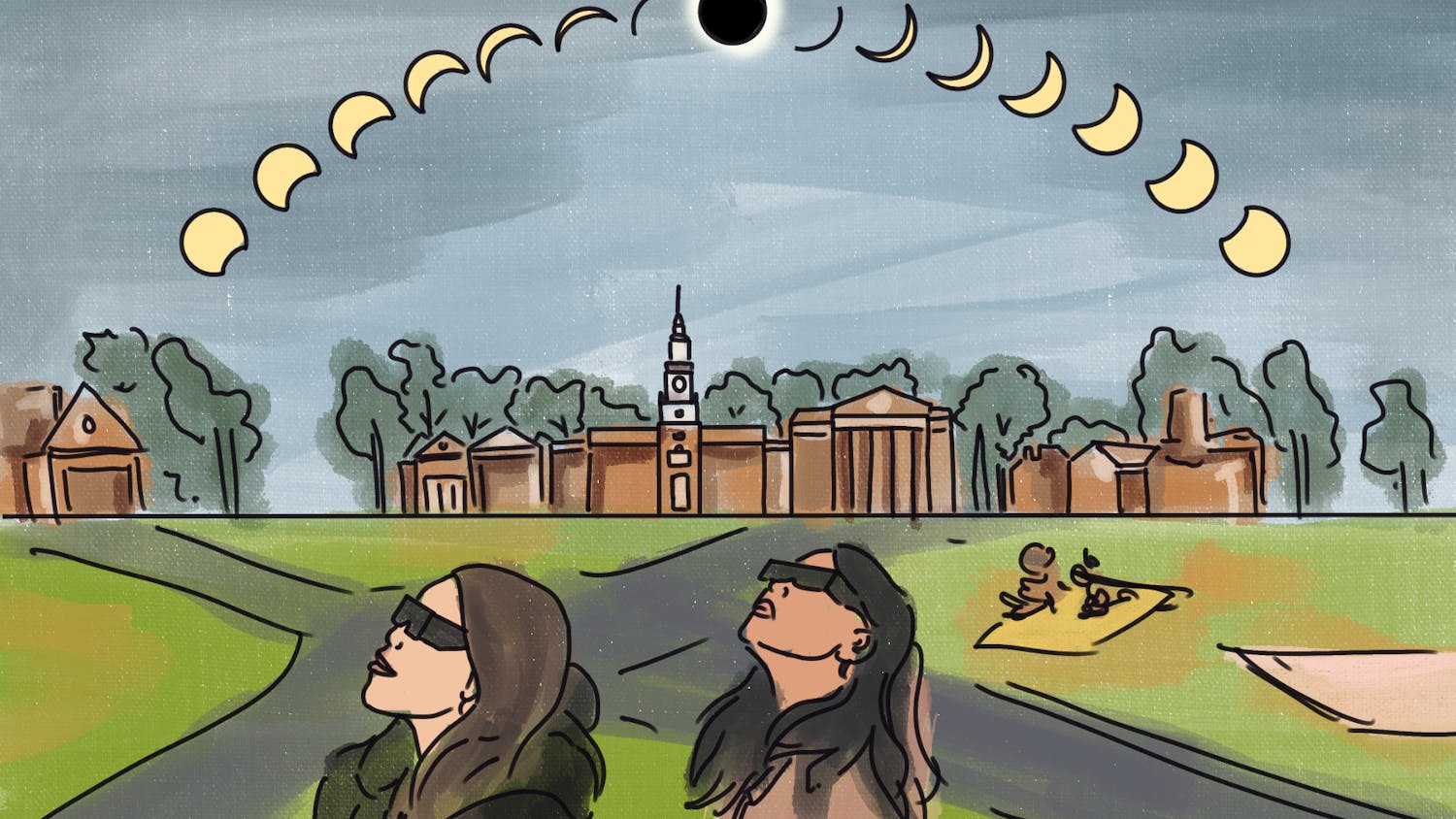A book: We read “The Lifespan of a Fact” by John D’Agata and Jim Fingal, in which D’Agata plows through with his writing in disdain of Fingal, the fact checker he’s been assigned. (The book is essentially one long argument between the two.) D’Agata argues that an essay is not necessarily a nonfiction form. He bends the facts of a particular suicide — that of Levi Presley in 2002 — to make a larger point about suicide and stimulation in Las Vegas. Okay. So he bends some facts to make this point, but if making the point requires the bending of facts, can the point exist at all? In other words, is it still a Truth if it is built out of many little approximate-truths (or truth-adjacent statements)? I think about this a fair amount in terms of my own writing.
A thought experiment: I am sitting with my friends Priya and Clara on the Collis porch. Priya is the kind of person who texts you, “Hey, do you think we have free will?” at 1:57 a.m. We discuss simulation theory, the idea that we’re living in a computer simulation developed by more intelligent creatures. The argument goes like this: Humans have made so much progress in developing sophisticated simulations, and we’ve done it in so short a time, it is likely that other creatures have been able to do the same. Given the number of potential creatures and their potential simulations, statistically speaking, our world is more likely to be simulated than real. Can the simulated realm reach Truth? Does Truth transcend the realms? What about morality?
A thought: If we can conceive of ourselves as products of a simulation, we can conceive of Sims or characters in Grand Theft Auto as products of simulation that also have their own consciousness. Would killing them be immoral, since we can recognize them as conscious products of simulation, capable of suffering just like us? If one accepted simulation theory, one would also have to accept that morality transcends virtual bounds.
Is it as immoral to kill a person in Grand Theft Auto as it is on earth? Does earning points make a difference? I feel like it can’t be good practice. (Again, “I feel,” so I stray from fact. I look up studies about aggressive behavior in kids who play violent video games. There are many different factors that influence the actions of mass shooters; exactly what role gaming or violent media plays is inconclusive, though. According to a 2015 resolution published by the American Psychological Association, the relationship between “violent video game exposure and aggressive behavior is one of the most studied and best established.”)
Priya, who plays Roller Coaster Tycoon on her iPad: “Yeah, I stopped making faulty coasters that kill 40 customers in one go. They used to have names; the game doesn’t give them names anymore.”
But back to fact. I recently read a New Yorker article (a sort of compendium of three book reviews) called “Why Facts Don’t Change Our Minds,” by Elizabeth Kolbert. The article discusses a number of studies that show that once subjects firmly believe something, it becomes very hard to change their minds. It’s not only confirmation bias, but also something like emotional bias. In other words, when presented with information that negates the subject’s previous beliefs, and not presented with information that confirms them, the subject still sticks to their original beliefs. Some scholars believe it’s an adaptive trait.
I think of adaptive traits that trouble the modern body. Priya says that bipedalism presents the modern body with sinus and lumbar issues, that for people with chronic sinus issues, doctors sometimes recommend getting down on all fours for half-hour periods.
At the end of the article, Kolbert writes: “There must be some way, [Jack and Sarah Gorman] maintain, to convince people that vaccines are good for kids, and handguns are dangerous. (Another widespread but statistically insupportable belief they’d like to discredit is that owning a gun makes you safer.) But here they encounter the very problems they have enumerated. Providing people with accurate information doesn’t seem to help; they simply discount it. Appealing to their emotions may work better, but doing so is obviously antithetical to the goal of promoting sound science.”
Here again, I am reassured of my work in fiction. If getting audiences to feel things deeply is the key to establishing beliefs (and not presenting them with facts), then fiction becomes as much a truth-making exercise as nonfiction. It is unclear, though, if feeling deeply changes opinions the same way it establishes them.
Perhaps I should get into children’s literature. The other day, Corinne found “Corduroy,” an illustrated children’s book about a bear who loses his button in a department store and goes exploring. We flipped through it and the images resonated with us: the escalator, the flashlight, the guard. How many times had we read this before bed? In how many other instances do authors get their work read over and over and over? The emotional reaction is triggered and the book’s message make its way into our brains. “Eloise,” “Angelina Ballerina,” “Chrysanthemum!” Remember her?
A fact: I would’ve absolutely taken a class on children’s literature if Dartmouth offered one. Art-making aspects, market aspects, psychological aspects. We hold our books dear.
A thing I did last week: I went to “Learning Time,” an event my friend Victoria hosts at her house with some friends, some beer and a couple of presenters who talk about their passion projects and academic work. There are presentations and Q&As, and everyone leaves with the wow-my-friends-are-so-knowledgeable-critical-and-hard-working-I-am-forever-impressed-with-them feeling that is equal parts love (for them) and impostor syndrome (for yourself). At this presentation, my friend Singer talked about the work she’d done for the Hood Museum, a research project on a winter count from a band of Dakota known as “Yanktonai.” A winter count is a piece of cloth with pictograms that record the history of the tribe from a certain period of time. The images act as visual storytelling devices; a winter count keeper could look at them and be able to tell the story of an event for every year that has a picture. For instance, one year there is a pictogram that shows “stars falling from the sky.” The winter count keeper could tell you that there was a spectacular meteor shower that year. The winter count that Singer did her research on records the Yantonai band’s history over a 90-year period. Winter counts get passed on so that a collective history of the band can be recorded.
I think about the degradation and unreliability of memories, how susceptible they are to change. Maybe the images evoke slightly different versions of the same story for keepers of different generations; maybe the facts are bent a little. But collective memory is not an exercise in fact, and neither is storytelling.



